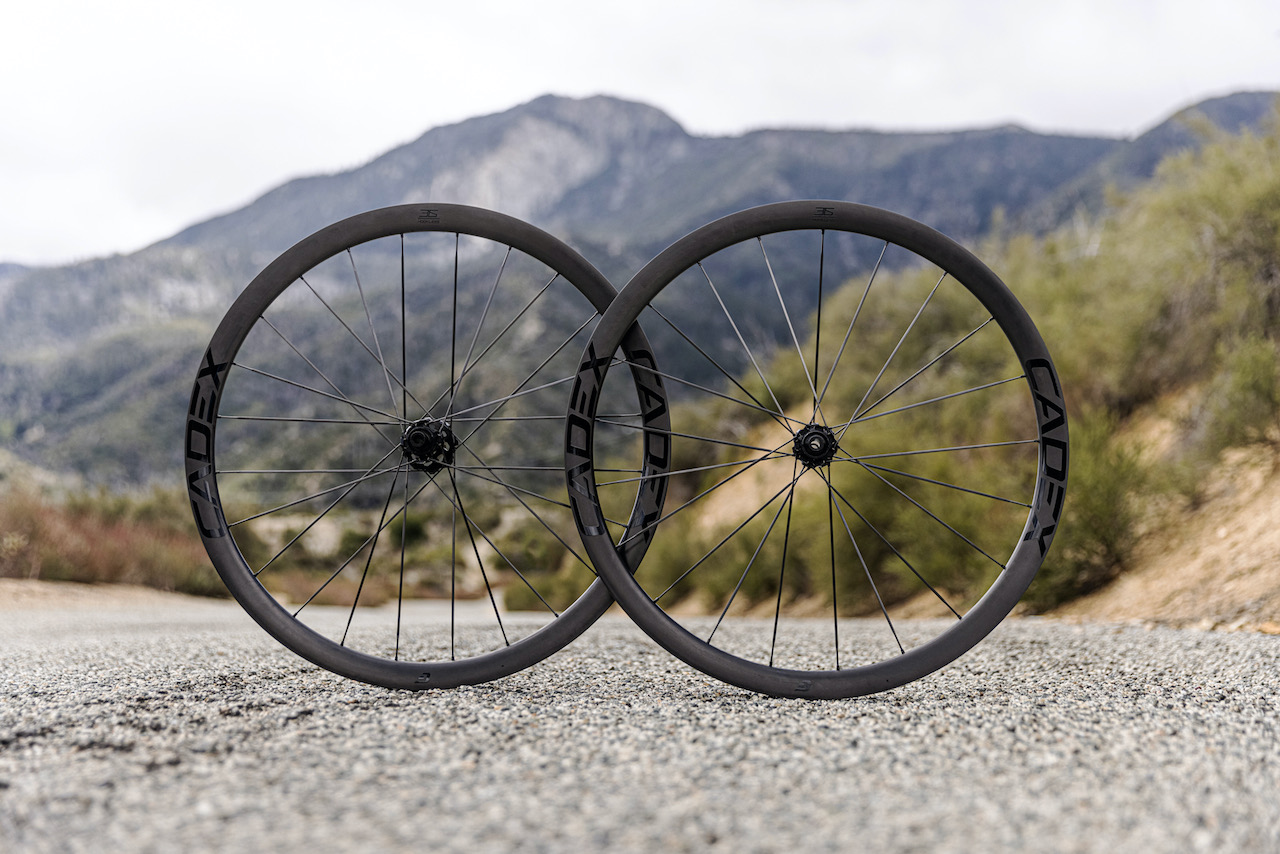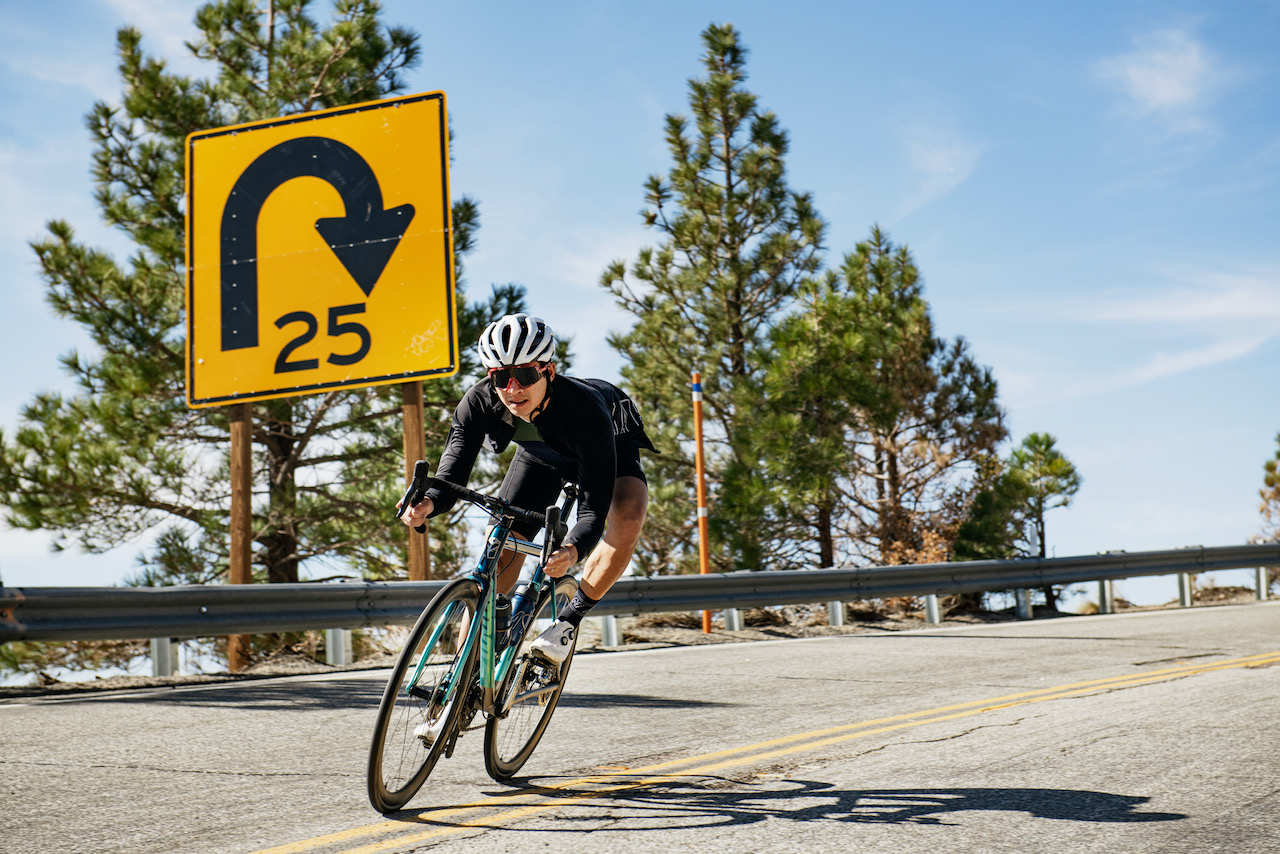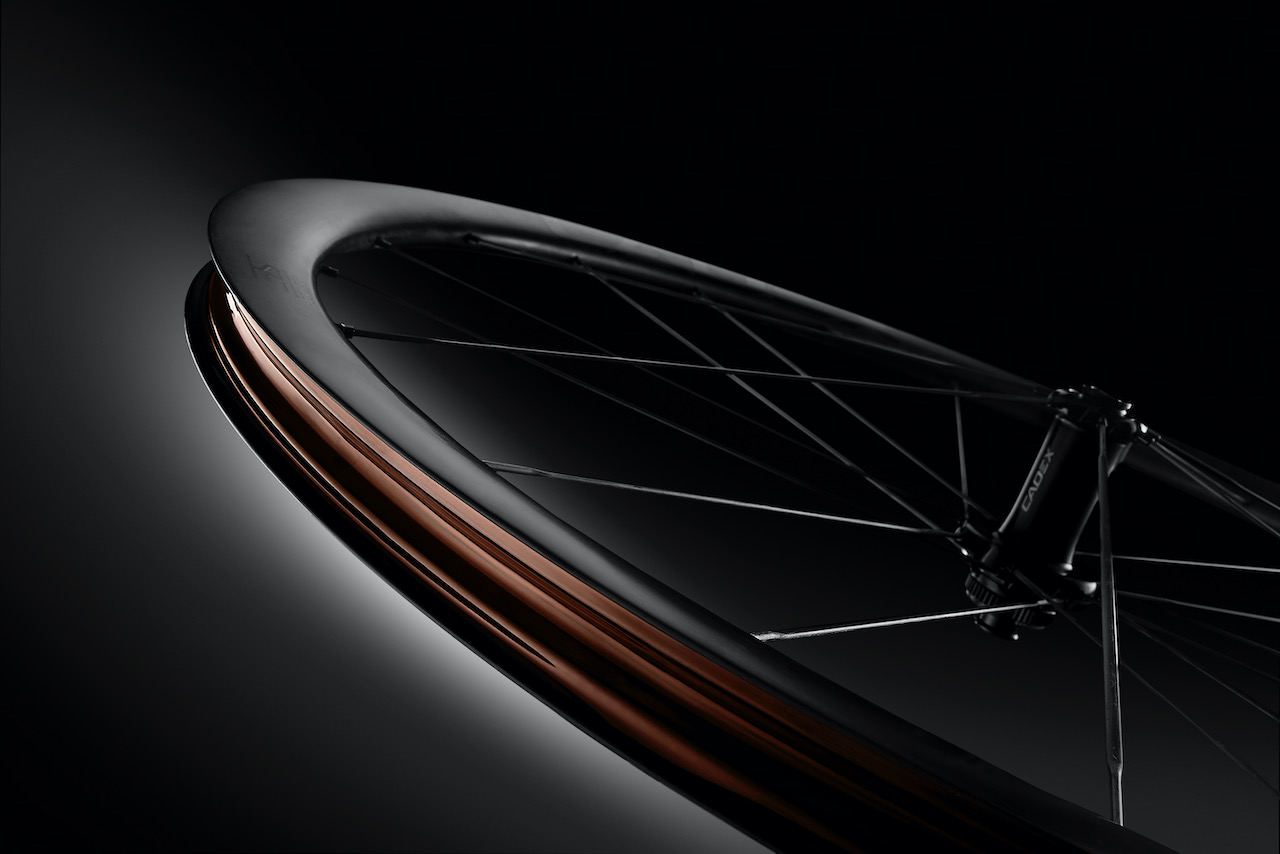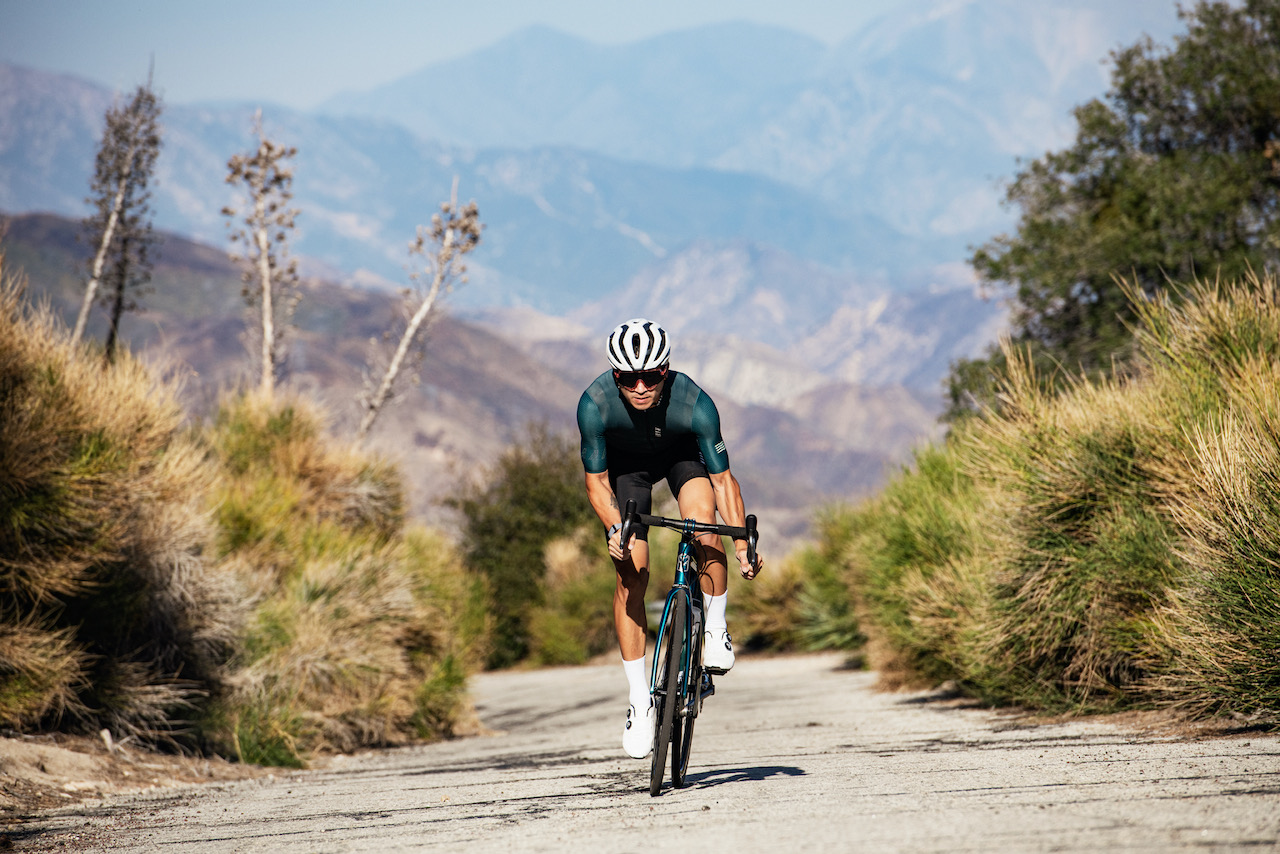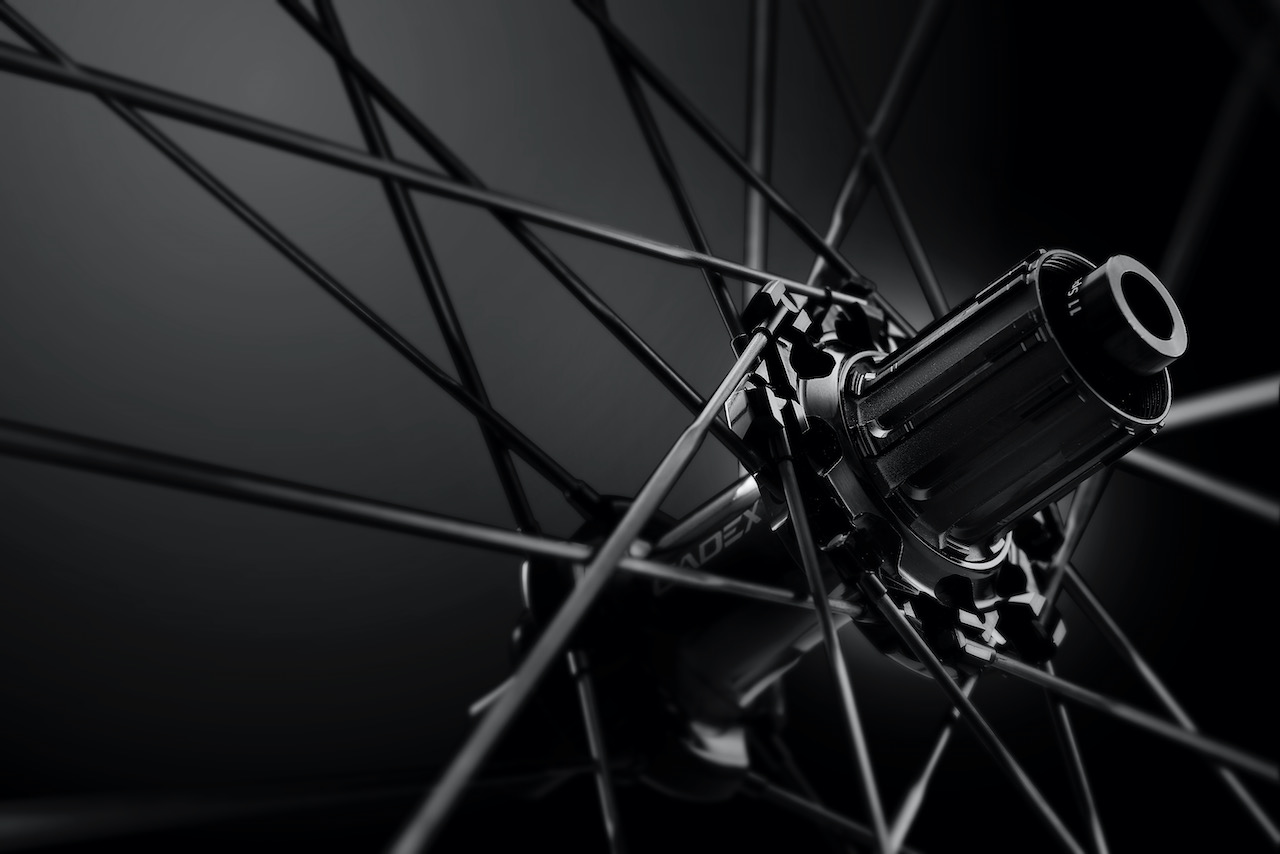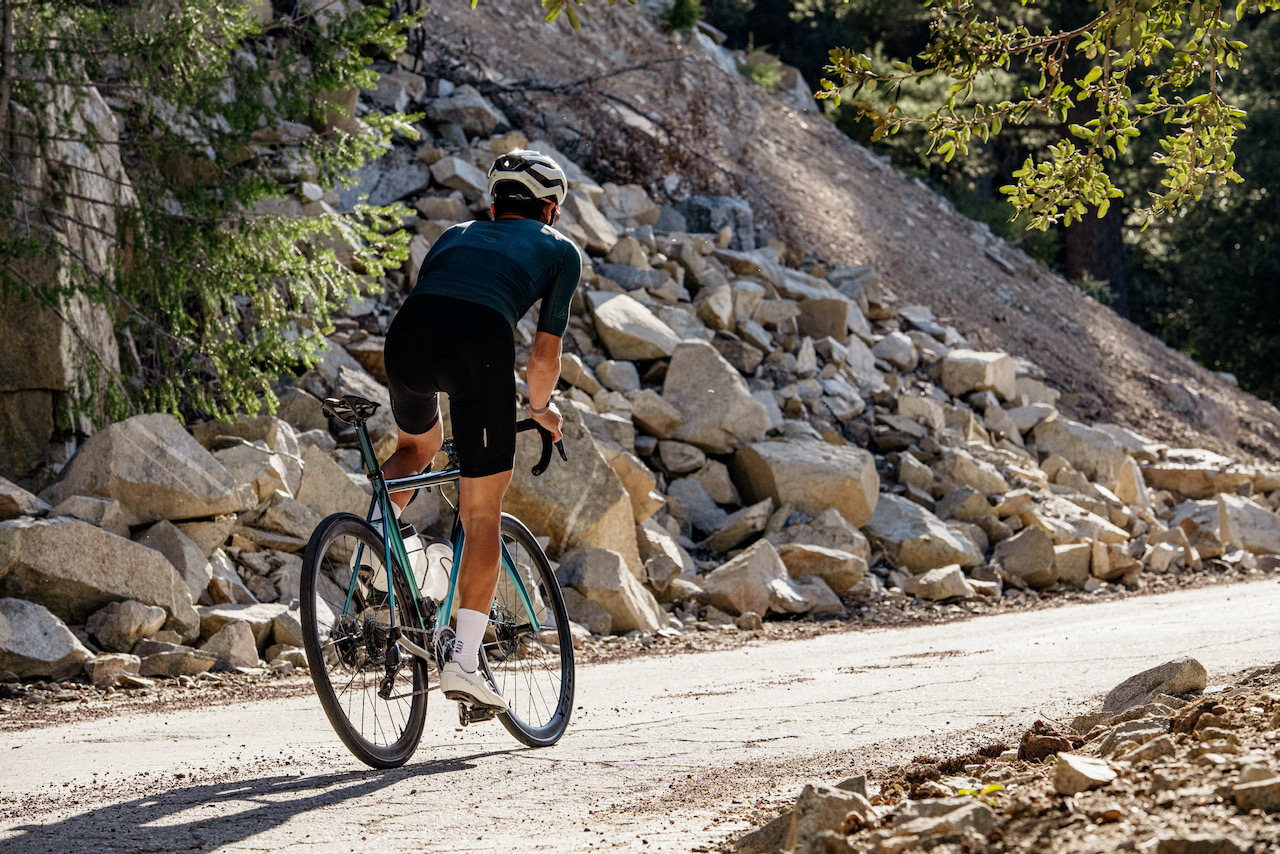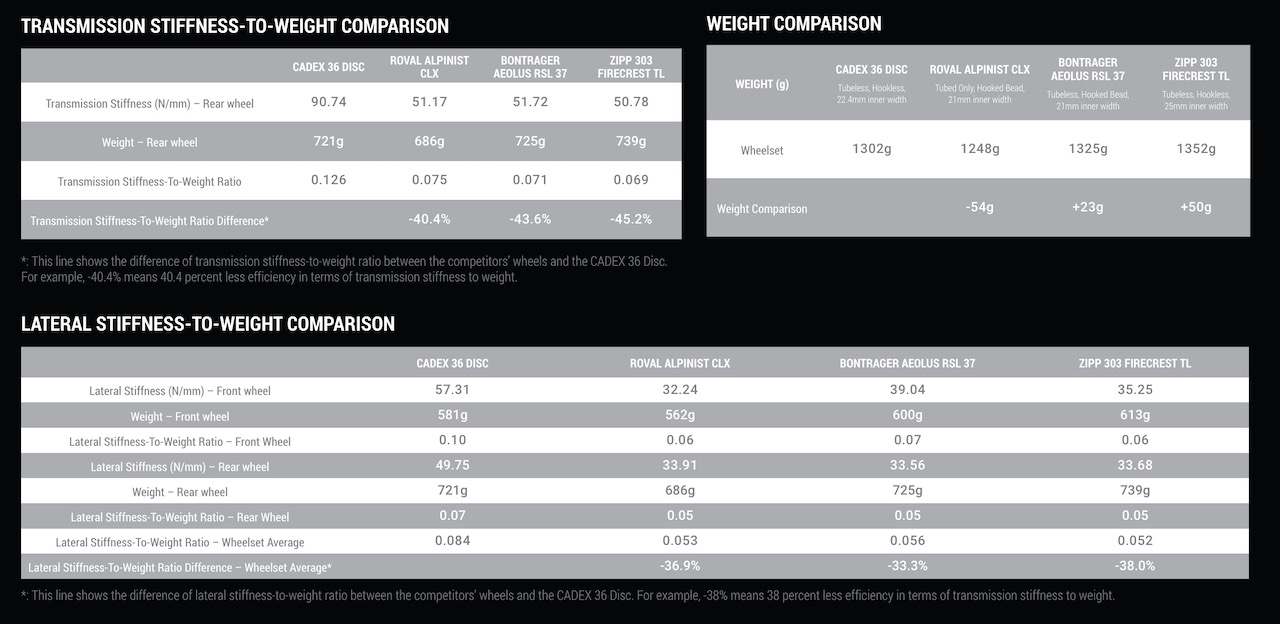CADEX wheels added a 36mm deep option to its expanding arsenal, rounding out a high-end wheel line that can go toe to toe with the big guns. The CADEX brand emerged from Giant Bicycles to offer high-end wheels, saddles, and more for performance-oriented riders. The CADEX 36 Disc is right on the money for the performance-minded — arriving with ceramic bearings, carbon spokes, a stiff ride, and a hefty $3,450 price tag.
What are they?
The CADEX 36 disc wheel is a performance-driven lightweight wheelset targeted at climbing and maximizing the sought after stiffness-to-weight ratio. The 36 is now the shallowest option from CADEX, and the brand boasts its new wheel has a better stiffness to weight ratio compared to competitors Zipp, Roval, and Bontrager (more to come on that).
CADEX fully embraces the hookless bead design and wider (than conventional standards) rim width. The complete package comes with no upgrade left wanting — upgraded hubs with ceramic bearings included.
Rim details
CADEX went all-in with reducing the weight and bulking up the stiffness of its new climbing wheelset. The rim is carbon, and hookless, with a 22.4 internal and 26mm external — somewhat in the middle ground for modern tubeless wheels. The rims are 21 hole front, 24 rear, laced to CADEX hubs with carbon spokes.
Hookless can be a polarizing word in the cycling community – especially road. The CADEX wheels are compatible with various tire manufacturers (listed here), but it looks like a Maxxis-heavy selection.
The carbon layup for the rim is cut using lasers for a super precise fit, allowing CADEX to proceed with paintless rims to reduce weight. But don’t worry about dings on a fragile “unpainted” rim — the 36 disc rim goes through a UV-protective treatment before the build process to add protection and longevity.
The middle of the road rim width keeps the CADEX 36 disc is open to various sizes but the manufacturer claims 25mm tires are the sweet spot. There is no max-width specified, and since Giant/CADEX noted that some of its athletes would be rolling the CADEX 36 discs on gravel — we’re guessing the 40mm spec listed on the compatibility sheet could be the max.
Upgraded DT-Swiss hub
For hubs on the 36 Disc, CADEX went with a hybrid ceramic bearing (an upgrade over its 45 and 65 wheels) and an updated freehub. The freehub body is based on the DT-Swiss EXP ratchet system. The CADEX version employs a 30T (usually a 36T) star driver and offers freehub bodies to fit Shimano, SRAM XDR, and Campagnolo road style cassettes.
CADEX claims the 30T ratchet system, (a solid middle-ground for road engagement) also cuts down on the overall drag of the hub.
Carbon Spokes
One of the more remarkable and significant weight-reducing components of the CADEX 36 build is the spokes — carbon fiber spokes. CADEX claims the carbon pair with alloy end spokes are nearly 46% lighter than DT-Swiss Aerolite spokes, a bold claim, and great marginal gain.
CADEX 36 Disc stiffness claims
There is no mistaking that CADEX came out to make the CADEX 36 Disc one of the stiffest wheelsets on the market. The wheelset comes in at a claimed 1,302 g which is very light — but not the lightest out there.
The biggest concern when CADEX created the 36 Disc was the stiffness and the forward propulsion the wheelset offered to the rider. Though the aero data is lacking in the CADEX white sheets — the stiffness to weight data is abundant.
For this testing, the engineers at CADEX take the wheel and mount it as it would be on the bike. Then perform a deflection test to obtain a static stiffness number. They also measure pedaling and stiffness as well — locking the hub in place and taking data from the spoke wind up.
Is a stiffer wheel faster?
Why is the CADEX wheel stiffer than competitors? One piece could be the carbon spokes, paired with a system that valued stiffness over any other variable.
Does this correlate to a fast wheel? Possibly — I’m guessing (we haven’t ridden these wheels yet) they are an asset on climbing stages and all-out vertical mileage. I don’t think stiffness would be a feature riders will look for on a cobbled stage or something in the classics. I’m similarly asking why a rider would want such a stiff wheel for a gravel race. The quickness of a wheel depends a lot on overall ride quality, and for that, we can’t speak — yet.
